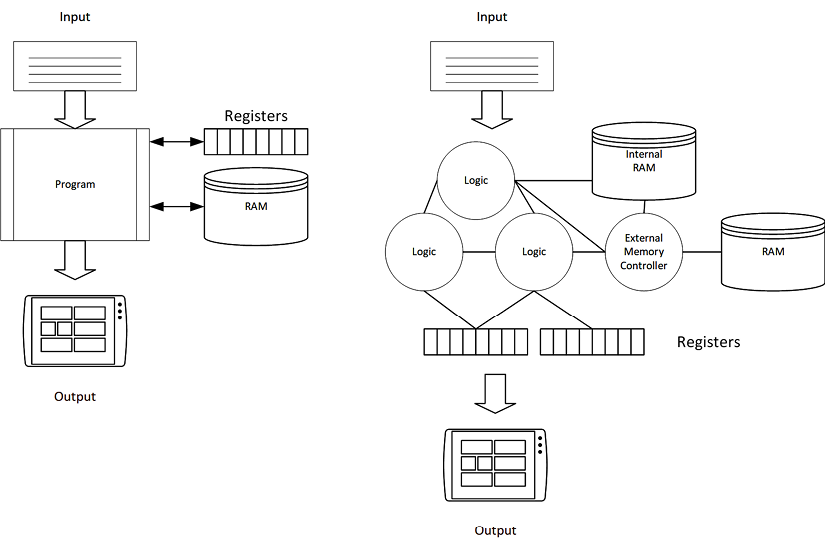Understanding the basics of HDL design
All computer programming languages need variables. A CPU with a running program can access stored values in physical memory or registers. Hardware Description Languages (HDLs) are a little different than the usual programming languages in that you are building hardware. There are variable equivalents in terms of storage/sequential logic, which we’ll discuss in the next chapter, but we also need wires to move data around the hardware we’re building using the FPGA routing resources, even if they are never stored:

Figure 3.2: Program flow versus HDL flow
In a traditional flow, as shown on the left of Figure 3.2, you have a computer that has a processor and memory. The program flows linearly. Note that with modern machines, there are increasing levels of parallelism, but physical parallelism remains minimal compared to what can be possible in custom hardware such as an FPGA.
When you write HDL code, you are using data...

























































